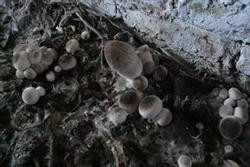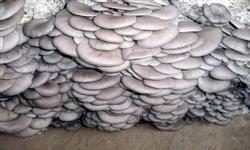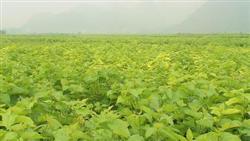Several keys to high and stable yield of cultivated volvariella volvacea

Straw mushroom is considered to be a variety of edible fungi that can be easily cultivated, because the straw raw materials used for cultivation are very extensive, and the period is short, and it is only more than a month from sowing to harvesting; but at the same time, it is the most difficult to obtain high and stable yield, and it is very "delicate". Once there is a mismanagement or occurrence of diseases and insect pests, there is basically no time to recover, resulting in reduced production or even no yield. Therefore, we should grasp the following key points: 1. To make high-quality culture medium: the ideal raw material is waste cotton residue or cottonseed shell, followed by rice straw, wheat straw and other crop straw. It is best to use fermentation, straw as raw material fermentation, it is best to add No. 4 nitrogen-fixing bacteria to improve the physical properties of the culture material and increase the nitrogen content. Can also add dry cow dung, rice bran, gypsum powder and other auxiliary materials. 2. Secondary fermentation: secondary fermentation can greatly reduce the occurrence and harm of diseases and insect pests, and degrade the culture material, which is conducive to mycelium absorption and achieve stable and high yield. 3. Select high-quality bacteria: this is the top priority. First of all, according to the market demand, select marketable varieties, and carry out cultivation experiments to determine that the performance is good before promotion; secondly, we should be cautious when buying bacteria, where there are miscellaneous bacteria or pests must not be used. Bacteria age should be appropriate, generally choose about 20 days of bacteria, bacteria age more than 30 days of general aging. 4. Topdressing and soil mulching: in order to obtain high yield, fertilization is usually used to further increase the yield when cultivated with straw. Such as adding glucose, potassium dihydrogen phosphate, magnesium sulfate and psilocybin when spraying water. If 1 kg of glucose, 0.1 kg of magnesium sulfate, 0.5 kg of potassium dihydrogen phosphate and 1200 tablets of vitamin B1200 are added to 100 kg of water and sprayed after picking mushrooms, triacontanol (0.06-0.08 g per 100 liter of water) is sprayed on the culture material before sowing, which can effectively improve the survival rate of primordium and reduce the death of mushrooms. Soil mulching is necessary, and it is best to use nutrient-rich soil. 5. Secondary cultivation: it can improve the utilization rate of raw materials and reduce the amount of labor. Usually used in the cultivation of waste cotton or cottonseed shell: after picking the first tide of mushrooms, dig out the seriously polluted area, sprinkle a layer of lime powder on the material surface, and then spread a new layer of culture material. 6. Summing up the experience in time: because of the short cultivation period, poor stress resistance, ventilation, temperature difference and humidity, the yield will be seriously affected. This requires growers to take scientific management measures in time according to environmental and climatic conditions, constantly sum up experiences and lessons, and prescribe the right medicine to the case in time.
- Prev

Winter breeding Pleurotus ostreatus to prevent deformity
The cultivation area of Pleurotus ostreatus is constantly expanding, the cultivation techniques are constantly renovated and improved, and the disastrous weather disturbs the cultivation of Pleurotus ostreatus from time to time. The main disastrous weather in winter and spring are: snowfall (including blizzard, snowstorm), cold spell, strong wind and cooling weather (including blowing sand and floating dust), continuous.
- Next

Mulberry cultivation techniques
Mulberry is a perennial woody plant, is a long-lived tree species, naturally growing mulberry has the longest life span of more than a thousand years. The cultivated mulberry is affected by artificial cutting and long-term leaf harvesting, and its life is much shorter, but its full-growing period is more than 10 years. First, the establishment of the new mulberry garden (1) choose the site to choose the soil layer.
Related
- Fuxing push coffee new agricultural production and marketing class: lack of small-scale processing plants
- Jujube rice field leisure farm deep ploughing Yilan for five years to create a space for organic food and play
- Nongyu Farm-A trial of organic papaya for brave women with advanced technology
- Four points for attention in the prevention and control of diseases and insect pests of edible fungi
- How to add nutrient solution to Edible Fungi
- Is there any good way to control edible fungus mites?
- Open Inoculation Technology of Edible Fungi
- Is there any clever way to use fertilizer for edible fungus in winter?
- What agents are used to kill the pathogens of edible fungi in the mushroom shed?
- Rapid drying of Edible Fungi

